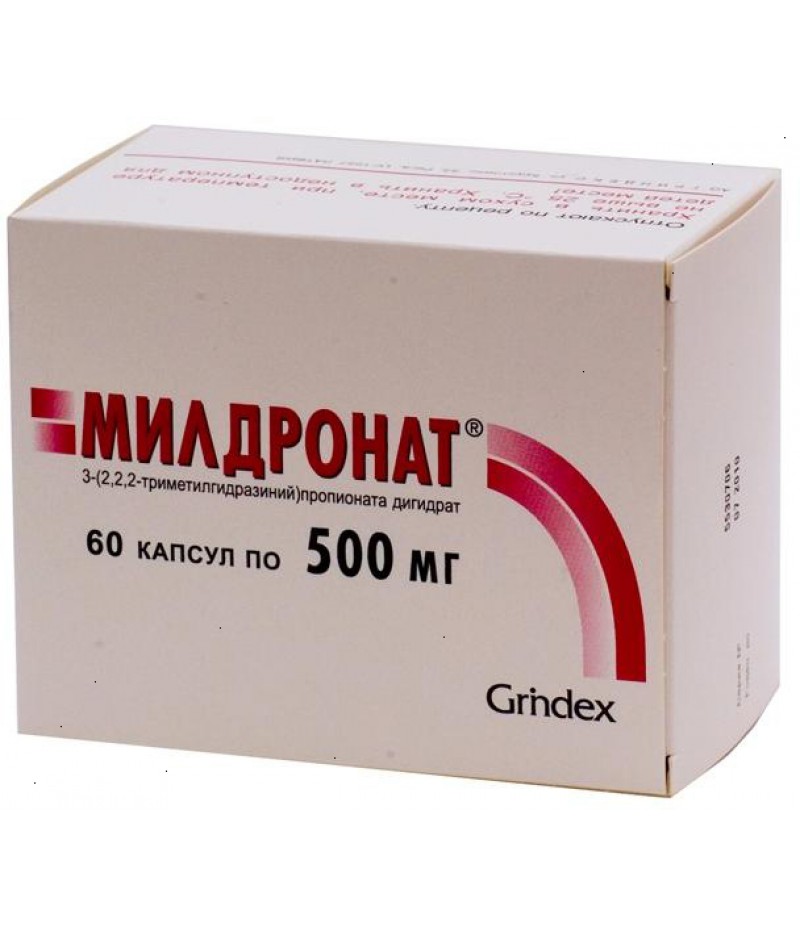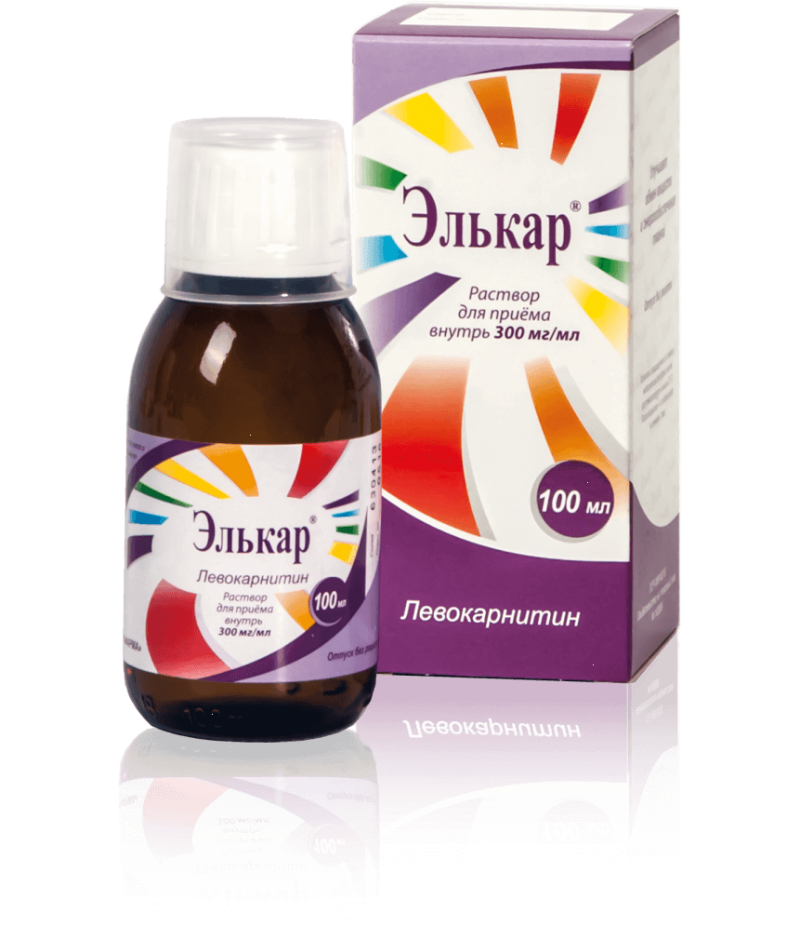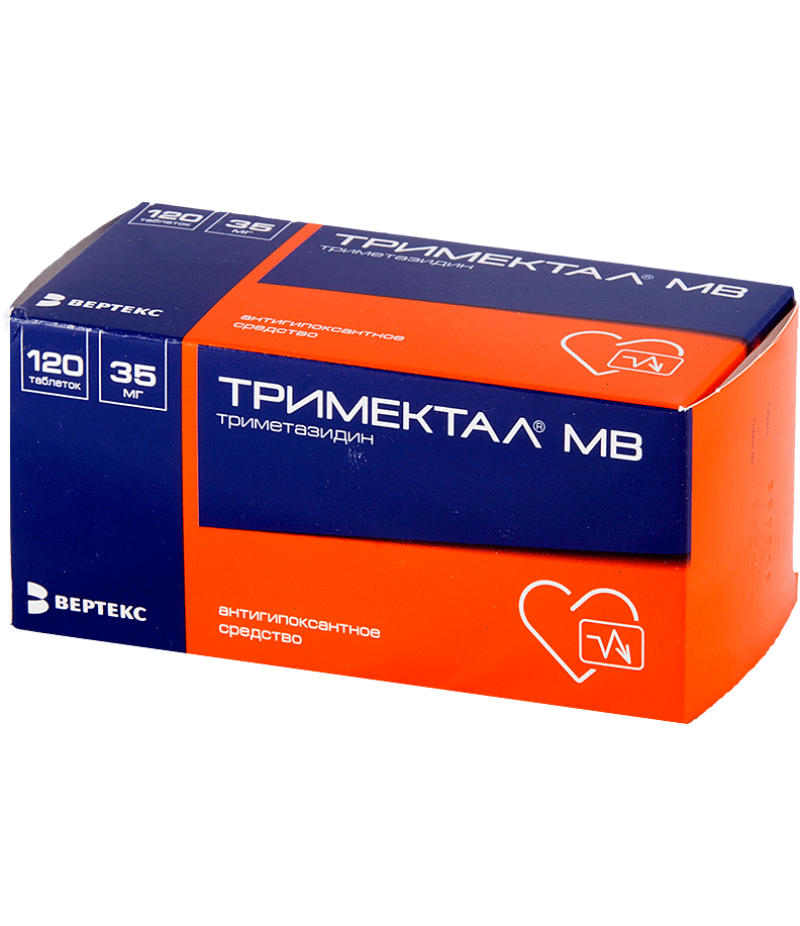Mildronate caps 500mg #60
- $30.37
- 3 or more $26.99
- Availability:In Stock
Mildronate user manualReed more and buy Mildronate on this pageCompositionA single hard gelatin capsule of Mildronate contains 250 or 500 mg of Meldonium as a dihydrate as an active ingredient and aux
Tags: caps
Mildronate user manual
Reed more and buy Mildronate on this page
Composition
A single hard gelatin capsule of Mildronate contains 250 or 500 mg of Meldonium as a dihydrate as an active ingredient and auxiliary substances: Amylum solani (potato starch), Silicii dioxydum colloidale (silicon dioxide colloid), Calcium stearate (calcium stearate).
Gelatinum (gelatin) and Titanium dioxyde (titanium dioxide) are used to make the gelatinous shell.
One milliliter of Mildronate Injection Solution contains 100 mg of Meldonium and water for injection as an auxiliary component.
In one tablet, Mildronate contains 500 mg of Médonium in the form of phosphate and the auxiliary components: Mannitum (E421; mannitol), Povidonum K-29/32 (Povidone K-29/32), Amylum solani (potato starch), Silicii dioxydum (silica) , Cellulose microcristalline (microcrystalline cellulose), Magnesium stearate (magnesium stearate).
Form of issue
The preparation Mildronate is manufactured by the manufacturer in the form of:
transparent colorless solution for injection;
hard gelatin capsules No. 1 and No. 2, filled with hygroscopic crystalline powder of white color. The powder contained in the capsules has a slightly pronounced characteristic smell and sweet taste (the capsule itself has a neutral taste);
tablets Mildronate Gx 500 mg (the taste of the tablet is slightly sour).
The solution goes on sale in ampoules of 5 ml (500 mg / 5 ml). In one carton pack contains: 2 cell packs with 5 ampoules of Mildronate in each and instruction on the use of the drug.
Capsules are packed in blisters of 10 pieces each. In one cardboard pack contains 4 blisters and instruction on the use of the drug.
pharmachologic effect
Meldonium is a synthetic drug with a similar effect to γ-butyrobetaine (HBB, a substance that is a precursor of oxytrimethylaminobutyric acid, a natural vitamin-like substance related to B vitamins).
According to Wikipedia, meldonia is characterized by the ability to improve metabolism and energy supply of cells and is used as:
cardioprotective;
antihypoxic;
angioprotective;
antianginal agent.
Mechanism of action Meldoniya determines a wide range of its pharmacotherapeutic properties. Admission of this drug contributes to improving performance, reduces the severity of mental, intellectual and physical overstrain, activates tissue and humoral immunity.
In patients suffering from heart failure, it increases the strength of contractions of the heart muscle, reduces the frequency of heart attacks (attacks of angina), and increases the body's tolerance to physical exertion.
In acute myocardial damage, the use of Meldonium slows the formation of necrotic zones, shortens the length of the rehabilitation period, normalizes blood circulation in the source of ischemic damage, and redistributes blood in favor of the ischemic site.
Under conditions of increased loads, mellonium helps to restore the balance between transport of oxygen into cells and the need for cells in it, prevents accumulation of cell exchange products and toxic substances in cells, protects cells and cellular structures from damage, ensures rapid compensation of the body's energy reserves and maintains the highest speed exchange processes.
Toning the central nervous system, meldonia effectively removes the disturbances in the functional state of the somatic and vegetative (autonomic) parts of the nervous system, including disorders that accompany the withdrawal syndrome in patients suffering from chronic alcoholism.
In addition, the substance has a beneficial effect on the state of dystrophically altered retinal vessels, which allows it to be used to treat vascular and dystrophic pathologies of the fundus.
Pharmacodynamics and pharmacokinetics
The effect of the active substance of the drug is directed to inhibition of the enzymatic activity of γ-butyrobetaine hydroxylase, which is the last enzyme in the chain reaction of the synthesis of L-carnitine.
Meldonium helps to reduce the concentration of free carnitine, prevents the transport of long chain fatty acids through the cell membranes, prevents cumulation in the cells of activated forms of unoxidized fatty acids, which are derivatives of acylcarnitine and acylcoenzyme.
In ischemic tissues restores balance between oxygen transportation and its absorption by cells, prevents disruption of adenosine triphosphate transport, activating concurrently with glycolysis, proceeding without additional consumption of oxygen.
The result of a decrease in the concentration of carnitine is an enhanced synthesis of the vasodilator γ-butyrobetaine.
After taking per os Mildronate tablets, the meldonium contained in it is quickly absorbed in the digestive tract. The drug is characterized by a sufficiently high rate of bioavailability. The latter is approximately 78%.
Concentration of Meldonium in blood plasma reaches its maximum values in an hour or two after administration. In the body meldonium is metabolized to non-toxic products - glucose, succinate, 3-hydroxypropionic acid.
Excretion of metabolites is carried out by the kidneys. The half-life (T1), depending on the characteristics of the particular organism and the dose taken, can be from three to six hours.
The drug in the injectable form is characterized by 100% bioavailability. Concentration of Meldonium in blood plasma reaches its maximum values immediately after administration of the drug. The half-life (T1), depending on the characteristics of the particular organism and the dose taken, can be from three to six hours.
The result of metabolism of Meldonium is the formation of non-toxic metabolites (glucose, succinate, 3-hydroxypropionic acid), which are then excreted from the body by the kidneys.
Indications for the use of Mildronate: from which tablets Mildronate, from which the drug in the form of injections
All dosage forms of the drug are intended for the treatment of adult patients.
Indications for use of Mildronate (for all medicinal forms of the drug):
IHD (in combination with other drugs and methods of treatment);
diseases of peripheral arteries;
reduced working capacity;
encephalopathy;
physical overload (including in sports);
postoperative period (to accelerate the recovery of the body);
heart failure in chronic form;
cardialgia (pain in the left part of the chest), caused by dyshormonal myocardiopathy;
bronchial asthma;
COPD;
alcohol abstinence (as an adjunct to specific therapy);
stroke.
Additional indications for the use of injections of the drug:
hemorrhage into the vitreous cavity of the eye (hemophthalmus);
hemorrhage into the retina of the eye;
thrombosis and occlusion of the central vein of the retina or its branches;
Retinopathy of a different nature of origin (eg, hemorrhagic or diabetic).
Application of Mildronate in Sports
Mildronate is a tool that is characterized by the ability to expand the range of tolerance to physical (both dynamic and static) loads and an intellectual function not only for ischemic injuries, but also for healthy people.
The drug is very useful for athletes due to its properties to improve the nutrition of the heart muscle and other muscles of the body and reduce fatigue, while improving the effectiveness of sports training.
Contrary to popular belief, Mildronate is not used as a vehicle for muscle growth. His task in sports and in bodybuilding in particular is somewhat different: Mildronate for athletes is shown as a preventive tool preventing fatigue (including cardiac muscle) and overtraining.
In addition, facilitating the faster removal of decay products from cells and accelerating the restoration of energy resources of cells, Mildronate improves metabolism at the cellular level and accelerates the recovery of athletes muscles after physical exertion. And the latter concerns both power loads and physical loads on the speed and / or endurance of the organism.
There is an opinion that the use of Mildronate in sports can provoke fatty liver hepatosis. However, it is groundless.
Mildronate does not allow fatty acids to penetrate into the cell and thus prevents the accumulation of fats in the liver. In addition, burning the predominantly sugar, the body consumes more raw materials, which are just fats, for each produced adenosine triphosphate molecule (that is, for energy production).
Meldonium did not belong to the class of doping until January 1, 2016, which allowed it to be used absolutely legally in all sports.
However, after the World Anti-Doping Agency (WADA) prohibited the use of funds in early 2016, a number of athletes, mainly from Russia and the countries of the former CIS, were caught using this drug. Mildronate also became the subject of a huge scandal when Maria Sharapova on March 7, 2016 recognized the use of this dope.
Mildronate: contraindications for use
Contraindications to the appointment of Mildronate (for all forms of release of the drug):
increased individual sensitivity to Meldonium or any of the auxiliary components of the drug;
intracranial hypertension, including those caused by intracranial tumors and venous outflow disturbances.
Side effects
Side effects caused by taking Mildronate, occur quite often. As a rule, they are expressed as:
allergic reactions (redness, rashes on the skin, itching and swelling);
dyspeptic symptoms, manifested by eructation, attacks of nausea, vomiting, heartburn, sensation of stomach overflow even after a small portion of food;
tachycardia;
increased excitement;
decrease in blood pressure.
Instructions for use Mildronate
It is often possible to meet the questions "Can I administer Mildronate intramuscularly?" Or "Is it possible to inject intramuscularly the drug?".
The instructions for medical use indicate that the drug in the injectable form is intended for intravenous administration, and the capsules and tablets are intended for oral administration (per os).
Dosage forms for oral administration should be taken as a whole, without chewing, grinding or emptying the contents of the capsules.
Mildronate IV in the introduction is made in ready-made form. Mildronate should be administered intravenously separately from other medications, dilution with an aqueous solution of sodium chloride is not required (but in some cases it is allowed).
When injected into the muscle, the injection solution is irritating and can provoke local painful sensations and allergic reactions of a local nature. For this reason, the drug Mildronate is usually injected into a vein.
Mildronate tablets: instructions for use
Patients with cardiovascular diseases tablets and Mildronate capsules are indicated in combination with specific therapy. The drug is taken at 500-1000 mg per day. The whole dose can be taken as soon as, and dividing into two doses.
As a rule, the course of treatment lasts from 4 to 6 weeks.
In cardialgia caused by dyshormonal myocardiopathy, Mildronate take once a day one tablet of 500 mg or two 250 mg tablets.
Patients with circulatory disorders of the brain after the elimination of acute disorders showed the use of the drug in a dose equal to 500-1000 mg per day. Take it at one time or divide into two groups.
Patients with cerebral circulatory disorders in chronic form are recommended to take 500 mg of Mildronate per day.
The duration of the course of treatment varies from 4 to 6 weeks. According to the decision of the attending physician, the patient may be assigned to repeat courses of treatment (usually two or three times a year).
Patients with pathologies of peripheral arteries are prescribed to take the drug twice a day for 500 mg. The recommended dose for increased intellectual and physical loads on the body (including athletes) is 1000 mg, which should be divided into two doses.
The duration of the course of treatment is from 10 to 14 days. If necessary, repeat the course, withstood a two- or three-week interval.
In the period before training athletes Mildronate is recommended to take twice a day in a dose equal to 500-1000 mg. The duration of the course of treatment in the preparatory period usually ranges from two to three weeks, during the period of the competition its duration varies from 10 to 14 days.
In alcohol withdrawal, patients suffering from chronic alcoholism, Mildronate should be taken four times a day for 500 mg. The duration of the course is from 7 to 10 days.
The maximum permissible daily dose is a dose equal to 2000 mg.
Overdose
Cases of overdose have not been documented. The drug Mildronate is characterized as being low-toxic and not provoking side effects that could threaten the patient's health.
Interaction
It is possible to combine Mildronate with antianginal, antiarrhythmic, anticoagulant, antiaggregant and diuretic drugs, cardiac glycosides, bronchodilators, etc. drugs.
Mildronate has the ability to potentiate the action of nitroglycerin, β-adrenergic blockers; nifedepine and other agents with coronary effects; antihypertensive drugs, as well as agents whose action is aimed at the expansion of peripheral vessels.
Because of the possible development of a moderately severe tachycardia and a reduction in blood pressure, the above mentioned agents should be used with Mildronate with caution.
Storage conditions
Mildronate should be stored in a dry place. Keep away from children. The optimum temperature regime is not higher than 25 ° C.
Shelf life - 48 months.
special instructions
In view of the fact that the drug can provoke a stimulating effect, it is recommended to apply it in the first half of the day.
Data on the ability of Mildronate to change the reaction rate and influence the management of transport are not available.
The drug is administered with caution to people with liver and / or kidney pathologies.
The experience of treating patients with myocardial infarction and unstable angina shows that the active substance Mildronate is not a first-line drug in ACS.
Purpose of Mildronate for Children
Since there is currently insufficient data on the safety of Mildronate in pediatric practice, the drug should not be used to treat children.
Compatibility with alcohol
The active substance of Mildronate is excreted from the body in 12 hours, therefore, after this time, the risk of interaction of the drug with another active substance is extremely low or nonexistent.
In general, drinking alcohol during treatment with Mildronate is not prohibited; However, if this drug is used for the treatment of cardiovascular disease or in violation of blood circulation of the brain, the patient is nevertheless recommended to abandon the use of alcohol.
This is due to the fact that taking the drug in combination with alcohol, you can cross out all the positive results that were achieved in the treatment of the disease.
Taking Mildronate with alcohol can provoke:
tachycardia;
pronounced allergic reactions;
sharp fluctuations in blood pressure;
dyspeptic symptoms.
Poor compatibility of Mildronate with alcohol is caused by an increased risk of various kinds of complications and the likelihood of recurrence of the disease. For this reason, alcohol should be excluded for the entire period of drug treatment.
The use of Mildronate in pregnancy and lactation
The safety of Mildronate for the treatment of pregnant women has not been proven. To exclude the possibility of its adverse effects on the development of the fetus, the drug is not prescribed during pregnancy.
It is not established whether meldonia can be excreted in the milk of a nursing woman. Therefore, if the mother shows treatment with Mildronate, for the entire period of therapy it is necessary to stop breastfeeding.
Reviews about Mildronate
Reviews about Mildronate on the forums are mostly positive. The unique mechanism of action of this drug allows it to be widely used to eliminate problems with the cardiovascular system, and also as a means of improving the efficiency of healthy people who are subjected to frequent physical and intellectual overloads.
And the patients of cardiac units, both doctors and athletes note the fact that Mildronate provokes a tonic effect. Against the background of its application, the memory function is significantly improved, mental processes are accelerated, dexterity of movements, endurance and the degree of resistance of the organism to unfavorable factors increase.
Cardiologists' reviews confirm the data of numerous studies that showed that the use of Mildronate in capsules and in the form of a solution for injections allows a more than nine-fold reduction in the incidence of recurrent myocardial infarction.
The patients' comments on Mildronate allow to conclude that the drug is simply necessary for people whose activity is associated with increased stresses on the body, as well as during the recovery period after prolonged abuse of alcohol, with pain and burning in the heart, cardiovascular system and other pathologies .
The average score for this tool is 4.8-5 out of 5 points.
Nevertheless, sometimes there are negative reviews about Mildronate. It is important to remember that, like any other medicinal product, Mildronate gives a good result only if its dose and concomitant treatment (if necessary) are correctly selected.






